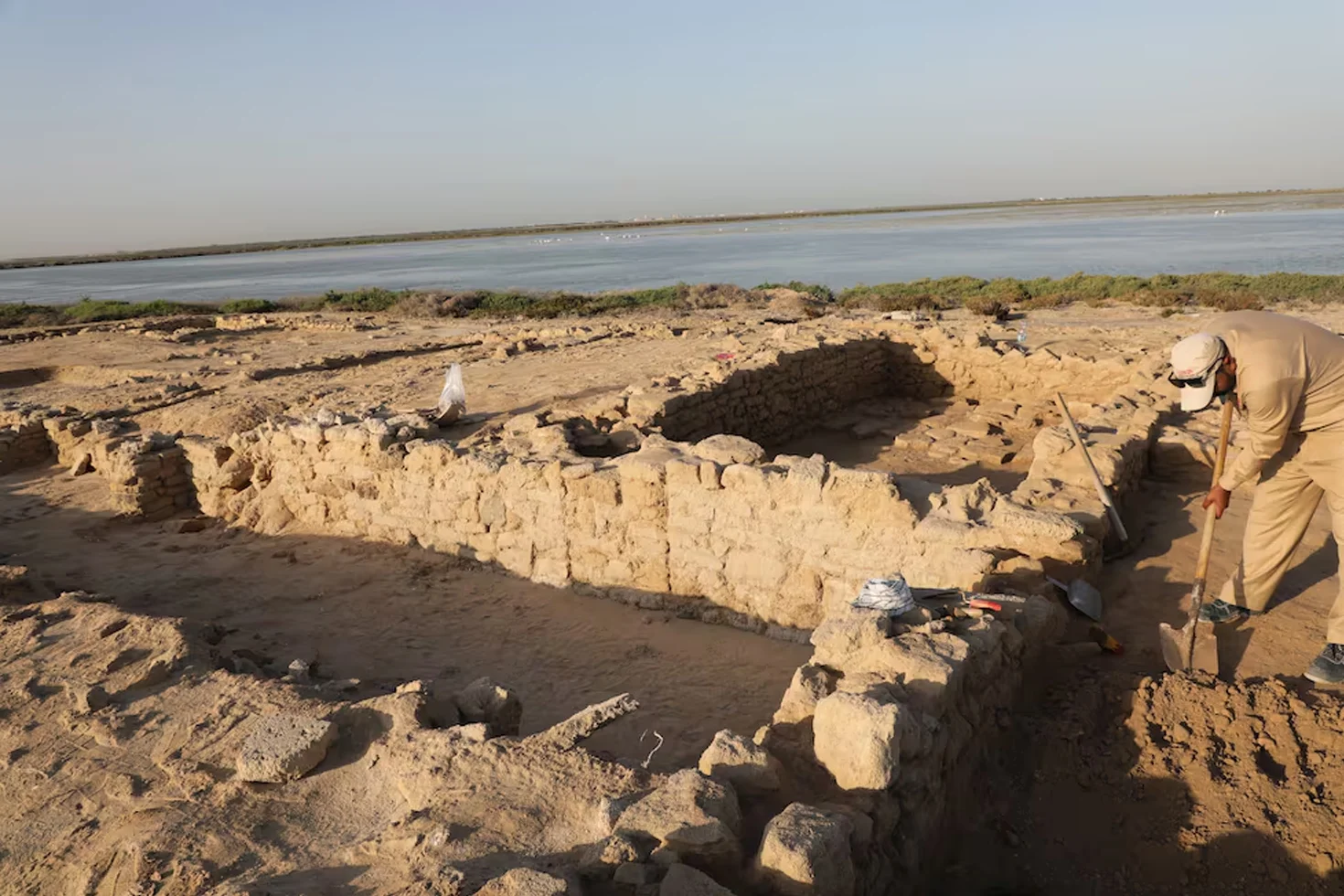Excavations in the Umm Al Quwain area of the UAE have revealed 6th century ruins that could be the lost city of Tu’am.
The ruins are situated on Al Sinniyah Island, part of a collection of small islands on the western part of the Khor Al Bidiyah peninsula.
Previous studies on the island have revealed a pearling village and monastery, which has been the focus of the latest season of excavations.
Archaeologists have discovered evidence of a larger settlement, with the earliest signs of occupation dating back to the 4th century AD and peaking in the 5th or 6th century.
The team uncovered traces of large semi-urbanised tenement buildings measuring 30 square metres, which are tightly packed around narrow walkways. According to the researchers, the settlement could be the lost city of Tu’am as described in Ancient Arab texts.
Tu’am was a regional capital on the Gulf coast that was famed for its pearl fishing industry and trade in precious gems.
The population went into decline following a plague and regional tensions, and subsequently was abandoned. Mass graves in the vicinity support the historical account of plague, as the skeletal remains show no evidence of trauma or a violent death.
“Our archaeological work has discovered the largest settlement by far ever found on the Gulf coast of the Emirates,” said Prof Tim Power of UAE University.
“And it’s exactly the right period for the city described in the early Islamic geographical sources. It’s clearly a really important place. No one has ever found it.”
Professor Power explained that while they have not found irrefutable evidence (such as an inscription bearing the town’s name), no other major settlements from this period have been discovered on the coast, strengthening the argument that the settlement is Tu’am. “It’s a process of elimination,” he explained.
Header Image Credit : Umm Al Quwain Department of Tourism and Archaeology
Sources : NUAE







